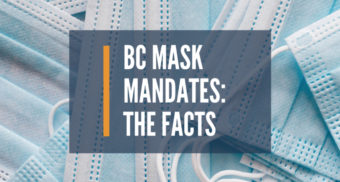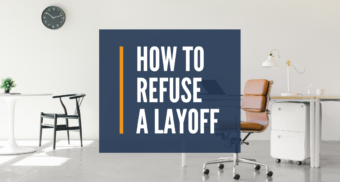How does the Canada Emergency Wage Subsidy (CEWS) impact my temporary layoff?

In these unprecedented times, it can be difficult to understand the various government measures intended to soften the blow of COVID-19 on the economy. Most recently, the Federal Government instituted the Canada Emergency Wage Subsidy. This subsidy is usually referred to as the “CEWS” but is sometimes improperly referred to as the “CEWB”.
What is the CEWS for?
The purpose of the CEWS is to encourage employers to recall laid-off employees by providing a 75% wage subsidy for a period of up to 12 weeks. This subsidy program is retroactive from March 15, 2020, through to June 6, 2020, and includes a maximum weekly subsidy of $847 per employee (i.e., if you earn more than $58,725 per year, you will cap out at $847 per week). As of May 8, 2020, the government has announced plans to extend the wage subsidy plans to provide continued support for the gradual economic re-opening past the original June 6 deadline. Details of the new deadline are set to be announced over the next few days.
As an employee, you should be aware that not all employers qualify for the CEWS, as there are strict eligibility requirements. For our purposes, the most relevant component of eligibility is whether an employer actually encountered a reduction in revenues of at least 15% in March and 30% in April and May.
Although it is not your responsibility as an employee to know whether your employer qualifies for the CEWS, if you have been placed on a temporary layoff, it is undoubtedly in your best interest to inquire as to whether your employer has applied.
Why should an employee find out if their employer has applied for the CEWS?
If your employer has not applied for the CEWS or has applied and was rejected, this may indicate that they have not suffered a reduction in revenues that they used to justify your temporary layoff in the first place. If this is the case, then you may have a valid claim that you have been terminated, as you were placed on a temporary layoff under false pretenses. This is called a constructive dismissal.
If your employer has applied and has been approved, why haven’t you been recalled to work? Given that CEWS does not require the employer to pay you anything in excess of the 75% subsidy provided by the government (though it is encouraged), there can be little excuse as to why you remain on a layoff. In these circumstances, this may be interpreted as an indication that your employer never intended to recall you to your employment and, as such, you may have a valid claim for constructive dismissal.
We realize that it is not always easy to understand how broad stimulus packages and policies may impact your employment – so if you have any questions, concerns, or require further explanation of anything in this post, the team at Samfiru Tumarkin LLP would be happy to speak with you.




